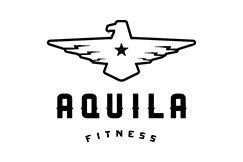AMRAP 20 Minutes:
30 Double Unders
20 Ab Mat Situps
10 Push Ups
2/1 Rope Climbs
Rx+
15 T2Bs
10 Ring Dips
We have been prescribing tempo reps on many movements in our warmups as well as lifts lately. Just a quick read so you all know what the notations mean and how to use them correctly.
Let’s start with an example:
Squats @ 3211
The first digit is always the negative, lowering or eccentric phase of the lift. In this case, you should take 3 seconds to descend from the top of the squat to the bottom.
The second digit is the amount of time spent in the bottom position of the movement. So in this example, you would hold perfectly still for 2 full seconds in the bottom position.
The third number is the positive, lifting, or concentric phase of the movement. For the squat in this case, you would need to stand up in 1 second, which quite fast.
And the last number is the time spent at the top of the lift before repeating. So you’d have one second standing up before going back into that next 3 second negative.
Now lets get a little fancier
Squat @ 30X1
Here we do the 3 second negative and then you rebound or bounce out of the bottom position as fast as possible, attempting to spend 0 seconds at the bottom. The X in a tempo set represents a variable amount of time that is performed as explosively or as fast as possible. 1 second lockout at the top and repeat for the prescribed number of reps.
When the X appears, you may end up taking any number of seconds to perform that phase of the lift, but your job is to do it as fast as possible. The X may take less than a second on warmup sets. If you are lifting near your max, that X could take quite a long time. 5 seconds or more.
Now for the curve ball
Not all movements start with the negative or lowering phase of the lift, but the tempo prescription still is written with the negative first. Squats and bench presses start with the negative followed by the positive, but movements like pull ups, overhead presses and deadlifts begin with the lifting phase of the movement or the 3rd digit in the prescription.
Example
Weighted Pull Up @ 3121
Since the pull up starts at the bottom, you will have 2 seconds to lift yourself up, hold your chin over the bar for 1 second, lower for 3 seconds and take 1 second before lifting up again.
Keep in mind that when we prescribe tempo, you should only to lift as much weight as you can while maintaining the prescribed tempo. If the tempo calls for a 1 second lift and it takes you 3 seconds to move the load from the bottom to the top, you are lifting heavier than intended for that day.
If you need to ask questions, by all means make sure you get this stuff right, but if you read this far you’ll likely be the one explaining it to the person next to you in your next class.
For a great explanation of tempo and the reasons why we use it, please refer to the following post from Optimum Performance Training.
http://optexperience.com/april-28-2014/






